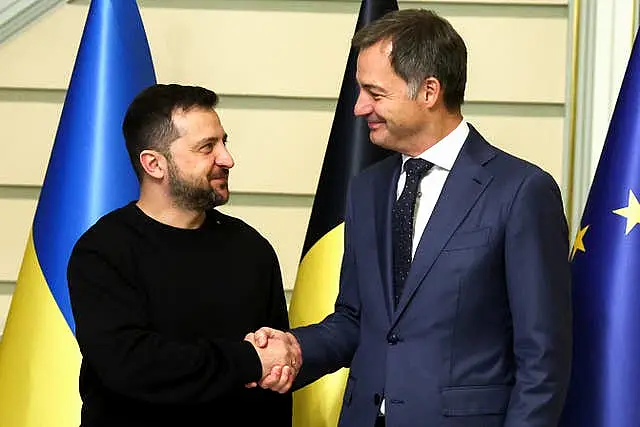Belgium’s prime minister said his country, which has the biggest interest in the global diamond trade in the European Union, is supporting a ban on Russian diamonds as part of sanctions targeting President Vladimir Putin’s government for its war against Ukraine.
The announcement came during Ukrainian president Volodymyr Zelensky’s visit to Brussels on Wednesday. He has repeatedly asked for such a move since the start of Russia’s invasion in February 2022.
For months, the Group of Seven advanced economies and the EU have been working on a way to trace and restrict the trade in Russian diamonds to prevent it from skirting the sanctions.

Russia exports rough diamonds worth about four billion US dollars (£3 billion) a year, nearly a third of the world’s total, according to various estimates.
Asked when the ban would come into force, Belgian prime minister Alexander De Croo said: “The goal is … January 1 of 2024.”
According to The Antwerp World Diamond Centre, the world’s most important diamond trading hub, 84% of all rough diamonds mined worldwide are traded in the Belgian city, making it the most important gateway to the world for Russian diamonds.
“It has taken some time, because we want to avoid that (the) diamonds ban would be circumvented,” Mr De Croo said, sitting next to Mr Zelensky.
“If you only do it on the wholesale markets, then it will be traded to other diamond centres in the world,” he added.
“And we will still have it in our shops, and it would make no difference for Russia. This full traceability and this full banning on the retail markets is the only way to make sure that Russia is not financing the war anymore with those diamonds.”
Diamond imports from Russia to the EU have not been hit by the 27-nation bloc’s measures so far, which have hurt many sectors of the Russian economy, including the lucrative gas and oil industry.
In Belgium, the diamond sector accounts for 6,600 direct jobs and 26,000 indirect jobs, with annual trade amounting to 37 billion US dollars (£30 billion).
Diamonds represent about 5% of total Belgian exports to the EU and 15% outside the European bloc.







